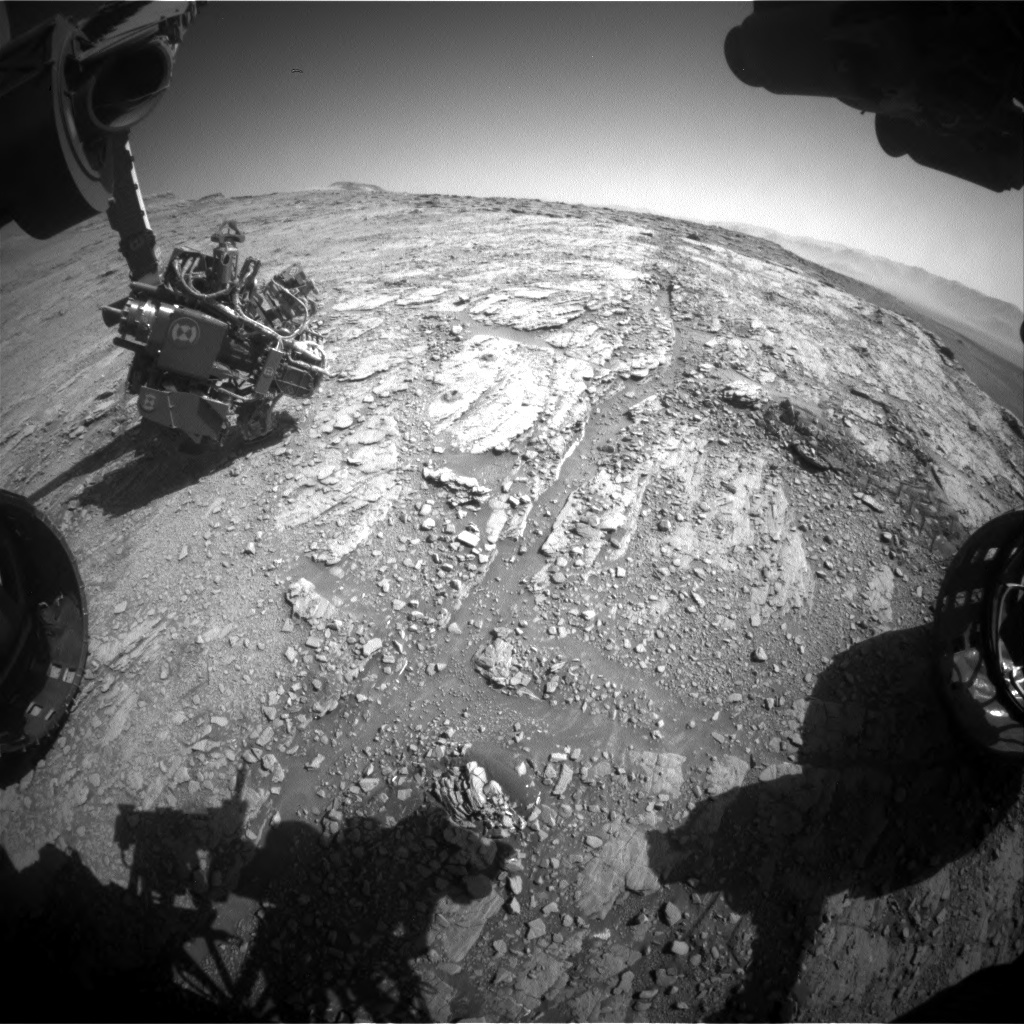3 min read

Everyone on the MSL team is excited to be planning to drive away from the “Glen Etive” location this weekend and continue our exploration of the lower slopes of Mount Sharp and the clay bearing unit. Before we drive away on the third sol of this 3-sol plan however, we are planning a few last activities to wrap up our investigation of the Glen Etive 2 drill hole and environs.
On the first sol of the plan (2553) MAHLI will take a selfie of the rover with our 22nd and 23rd drill holes on Mars in the background (Glen Etive 1 and 2); smile Curiosity! MAHLI will also image the ChemCam RWEB (Remote Warm Electronics Box) to take images of the ChemCam telescope window to check for dust. While the arm is in a favourable configuration we also plan to acquire Mastcam imaging to fill in some gaps in the previously acquired 360° mosaic. Following the imaging, Curiosity’s arm will be used to place the APXS ~1 cm above the drill tailings surrounding the Glen Etive 2 drill hole, before integrating on the tailings overnight. We will compare the chemistry of the tailings with the material dumped from the drill bit assembly (acquired in the previous plan) and the brushed rock surface to look for variations in composition with depth for the Glen Etive 2 drill hole. The tailings are derived from <2 cm depth, and the dump pile is derived from >2 cm depth and is representative of the fines delivered to the rover’s internal CheMin and SAM instruments. The measurement will also allow us to make a full comparison with other drill holes.
At the beginning of the second sol (2554) MAHLI will take an image of the tailings to document where the APXS was placed, before the arm is moved out of the way to facilitate remote sensing observations. These include environmental monitoring of the atmosphere with Navcam and Mastcam along with a Mastcam multispectral observation of the Glen Etive 2 dump pile, ChemCam LIBS on the Glen Etive 2 dump pile and tailings, and Mastcam documentation imaging of the ChemCam targets. During the overnight of sol 2554, CheMin will run their third X-ray diffraction analysis of Glen Etive 2 to help refine the mineralogy of the sample.
An early morning science block on sol 2555 will allow the Environmental group to continue their cadence of atmospheric observations. After the planned drive to a megaripple, we will take a Mastcam clast survey and a series of post-drive images to facilitate targeting in the new workspace, and to aid with planning of our next drive.
Standard background REMS, RAD and DAN activities are also planned.
Written by Lucy Thompson, Planetary Geologist at University of New Brunswick







